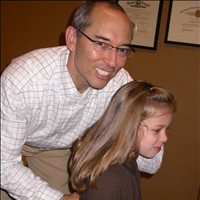Fitness Adds Life to Your Years
If you have decided to get more active, congratulations! Making that decision is an important first step in becoming a healthier person.
o Being fit helps you look and feel your best and reduces your risk for a heart attack, diabetes, high blood pressure, and some cancers.
o Start with small, short-term goals that you can reach pretty easily. It's easier to stick to something new when you have early, frequent successes.
o Support from family and friends can go a long way toward helping you succeed.
If you're worried about how more activity might affect your health, have a checkup before you start. Follow any special advice that your doctor gives you for getting a smart start.
Doing an exercise or some other physical activity once isn't so hard. The hard part is making changes in your daily life so that you start moving more-and keep moving more as part of your daily routine. Starting an exercise program-or any kind of change in the way you live your daily life-is like being on a path. The path leads to success. And there are three steps you have to take first:
1. Have your own reasons for doing this.
2. Set goals. Include long-term goals as well as short-term goals that you can measure easily.
3. Think about what might get in your way, and prepare for slip-ups.
Whatever you choose for your goal, experts recommend doing either of these things to get and stay healthy:
o Moderate activity for at least 21/2 hours a week. Moderate activity means things like brisk walking, brisk cycling, or shooting baskets, and any activities including daily chores that raise your heart rate can be included.
o Vigorous activity for at least 1¼ hours a week. Vigorous activity means things like jogging, cycling fast, cross-country skiing, or playing a basketball game. You breathe faster and your heart beats much faster with this kind of activity.
It's fine to be active in several blocks of 10 minutes or more throughout your day and week. And you can choose to do one or both types of activity.
Stretch, Breathe, and Lift.
Stretching for flexibility - Do all stretches gradually. Don't push or bounce the stretch. You should feel a stretch, not pain.
Aerobic exercise - like walking, is great for your heart, lungs, and muscle tone.
Muscle strength and endurance - Like muscle, bone is living tissue that responds to exercise by becoming stronger. When you exercise, your muscles pull on your bones, putting weight and pressure on your bones. Your bone adjusts to these pressures, and builds itself stronger for the next time around. Muscle building helps you avoid injury by strengthening joints and improving bone density. It also improves balance and posture, making it easier to do everyday tasks. More muscle mass also revs up your metabolism, which helps you work toward your ideal weight and helps promote a youthful appearance as you age. Lifting weights and working with kettle bells are two of the best exercises for building strong bones and muscles.
Remember, it's perfectly normal to try something, stop it, and then get mad at yourself. Lots of people try and try again before they reach their goals. If you feel like giving up, remember your reason for wanting to change, think about the progress you've made, and give yourself a pep talk and a pat on the back. When you hit a barrier-and most people do-get support.
Try doing your activities with a partner. It's motivating to know that someone is counting on you. Join a class or workout group. People in these groups can give you support when you don't feel like exercising and boost your morale when you need a lift. Give yourself positive reinforcement. Reward yourself! Talk to Dr. Devine about your goals and your routine. He can help you track progress toward your health goals. Do whatever it takes to remind yourself that you've been meeting your goals. You're successful!
Why Kettlebells are a great fitness tool you should know about.
Kettlebells, cannon ball shaped weights with thick suitcase-like handles are quickly becoming the strength tool of choice for athletes, coaches, and trainers. Kettlebells focus on movement not muscle. Kettlebells teach the body to control a weight that is in motion which directly translates to sports and Kettlebell movements teach the body to stabilize the core because almost all movements are done free-standing. A few of the many benefits of training with Kettlebells are:
Strength-Kettlebell training develops strength in ALL planes of movement. We live and play in a three-dimensional world therefore we should train in that manner.
Flexibility/Mobility-Kettlebell training promotes the body to 'open' up.
Balance-Kettlebell training is off-centered and focused. This calls for extreme attention to balance as the weight travels through the air.
Coordination-Kettlebell training teaches 'connection' of your upper and lower body. This element provides athletes a superior edge in their training protocol due to greater body rhythm.
Resilience to Injury-Kettlebell training offers complete development in all planes of movement, therefore preventing more injuries.
Cardio-Kettlebell training enhances cardiovascular training. The conditioning aspect can help you lose weight.
One of the best Kettlebell studios in America is right here in Seattle. To get started now and lose weight, increase core strength, and build a powerful back, visit Kettlebility.com for more information and demonstrations.
10/16/2009 2:33:54 PM
Comments
Be the first to leave a comment.
Not Everyone Should Use Essential Massage
Wellness Editor

Strain of Gut Bacteria Could Be Destroying Your Liver
Wellness Editor

Iron Levels Could Affect How Fast We Age
Wellness Editor

Four Ways to Raise Financially Responsible Kids
Anne Leedom

Still Wearing Shoes in Your Home?
Wellness Editor

When Body Odor Is a Sign of Illness
Wellness Editor

Are You a ‘Doomscroller’? A Warning
Wellness Editor

Parenting Power Struggles: Who is Really Misbehaving?
Anne Leedom

